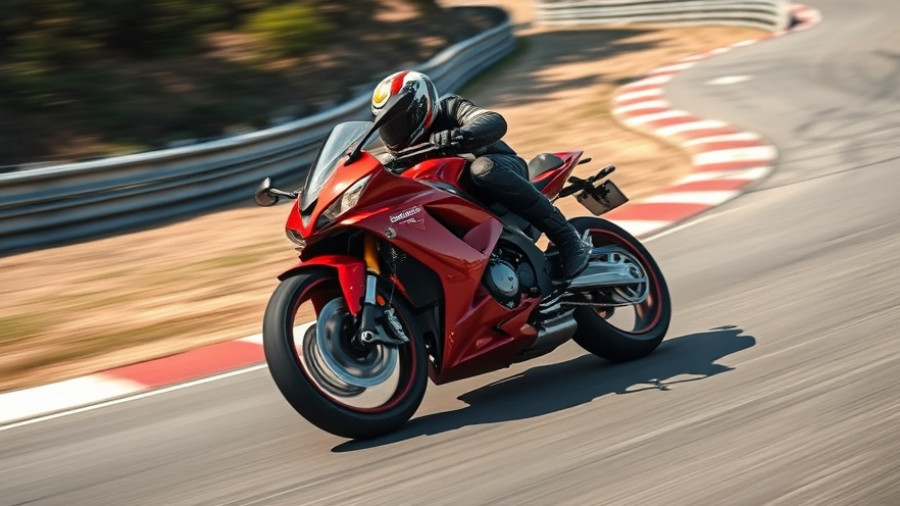
Celebrating Subaru's Performance Heritage
Subaru has tantalized enthusiasts with the unveiling of the 2026 WRX Series.Yellow and BRZ Series.Yellow, limited production models that pay homage to its racing roots. Each is capped at just 350 units and presented in an eye-catching Sunrise Yellow, reminiscent of Subaru's rich history in motorsports. These models are based on the tS trims, incorporating enhanced suspension systems and high-quality interiors tailored for performance aficionados.
A Deeper Look at the WRX Series.Yellow
The WRX Series.Yellow remains true to Subaru's rally heritage, boasting a powerful 271 horsepower 2.4-liter turbocharged Boxer engine, complemented by Subaru's renowned Symmetrical All-Wheel Drive. The vehicle's electronically controlled adjustable dampers are tuned by Subaru Tecnica International (STI), a feature indicative of its performance-driven mindset. The matte black alloy wheels give it a bold look, while the combination of Brembo brakes and 19-inch tires enables precision handling on any terrain.
The Elegant Design of the BRZ Series.Yellow
In contrast, the BRZ Series.Yellow emphasizes agility and balance, equipped with a 228 horsepower 2.4-liter naturally aspirated Boxer engine. This model is designed for driving purists, featuring a close-ratio six-speed manual that delivers power to the rear wheels. It sports a constrained yet sophisticated interior with yellow accents that pop against the all-black theme. This careful balance of design and functionality reinforces Subaru’s commitment to performance.
Why Limited Production Models Matter
The significance of these limited production models extends beyond aesthetics; they represent a calculated move by Subaru to cultivate exclusivity in its offerings. The demand for unique vehicles often elevates their value among collectors, which can lead to long-term appreciation. With their robust engineering, these models check all the boxes for car enthusiasts, potentially making them future classics in Subaru's lineup.
Relevance to Car Enthusiasts and Collectors
Car enthusiasts often look for vehicles that not only provide performance but also stand out in terms of design and rarity. The WRX and BRZ Series.Yellow models satisfy this need spectacularly. The production limits mean that prospective buyers aren’t just purchasing a car; they’re investing in a piece of automotive history that speaks to Subaru’s legacy. The buzz around these vehicles at events like Boxerfest only serves to amplify their desirability.
Historical Context: Subaru's Legacy in Motorsports
Understanding Subaru's journey in the automotive industry adds depth to its current offerings. From their roots in the late 1960s to winning World Rally Championship titles, Subaru has maintained a strong identity built on performance, durability, and innovative engineering. This recent release of the Series.Yellow models captures that spirit, thereby rekindling interest in Subaru's motorsport lineage.
Looking Forward: Trends in the Automotive Industry
The arrival of limited-edition vehicles is a noteworthy trend in the automotive industry, reflecting manufacturers’ strategies for maintaining consumer interest and loyalty. As consumers increasingly seek personalized and performance-oriented vehicles, Subaru’s move to release models with distinctive features signifies its understanding of market dynamics. This trend is intertwined with a larger narrative within the automotive industry, focusing on offering heightened performance and unique customer experiences.
How to Secure Your Spot
For fans eager to seize these limited offerings, being proactive is key. Prospective buyers should engage with local dealers early to express their interest and inquire about pre-order opportunities. Additionally, staying informed through automotive industry newsletters can provide timely updates regarding pricing and availability, ensuring enthusiasts are among the first to know about these unique vehicles’ release.
Final Thoughts: Exclusive Energy in Every Turn
With their striking design and powerful performance, the 2026 WRX and BRZ Series.Yellow models embody a passion for driving that Subaru has diligently crafted over decades. These vehicles are not simply modes of transportation but a celebration of Subaru’s commitment to enhancing the automotive experience. As the public debut approaches, excitement mounts, and it’s clear these limited editions will capture the hearts and garages of many.
Don't miss your chance to get behind the wheel of one of these extraordinary models. Keep an eye on local dealers for details and pricing to ensure that you can grab your limited Edition Subaru before they're gone!
 Add Row
Add Row  Add
Add 




Write A Comment